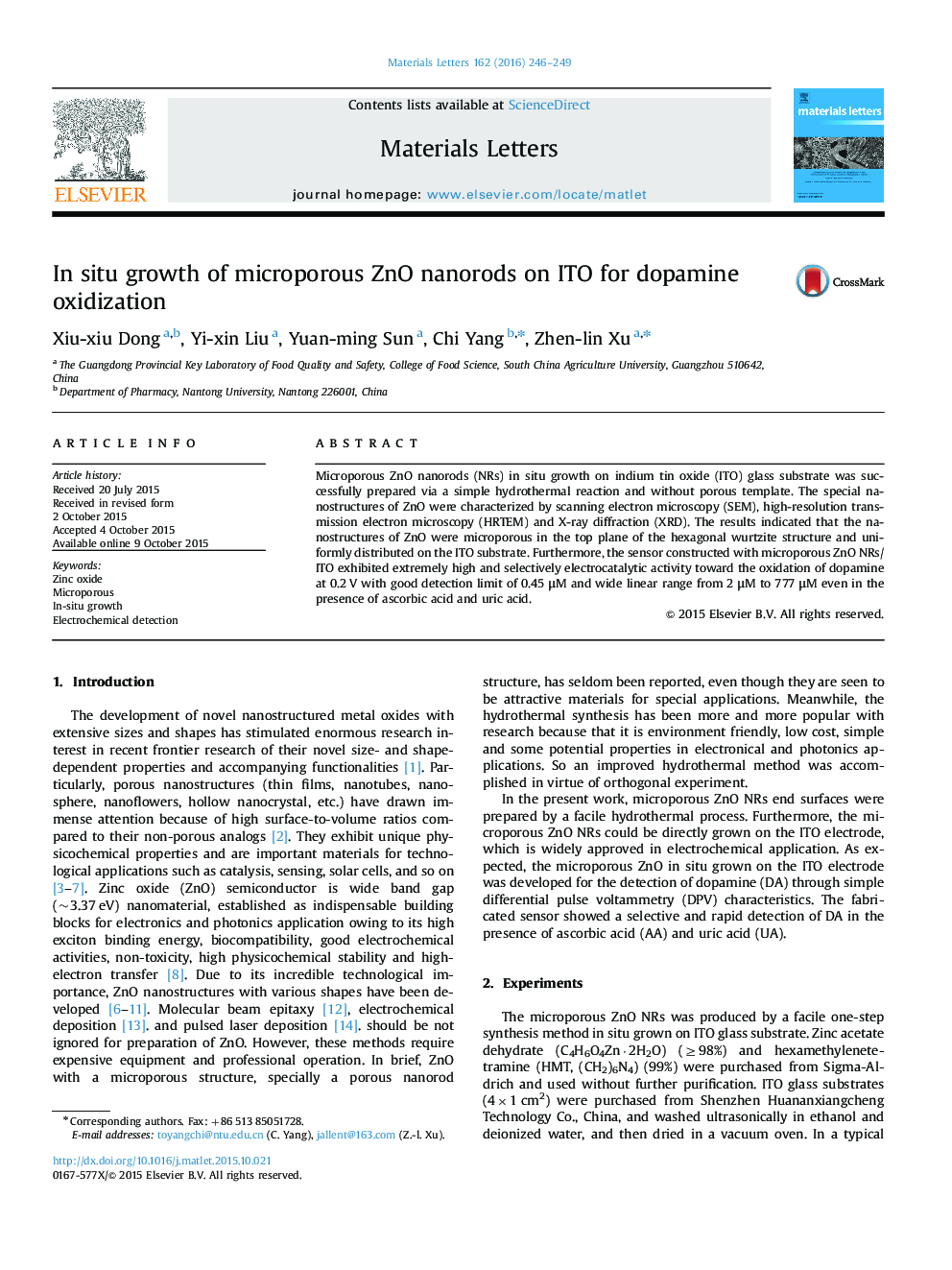| Article ID | Journal | Published Year | Pages | File Type |
|---|---|---|---|---|
| 1641707 | Materials Letters | 2016 | 4 Pages |
•A facile and one-step hydrothermal synthetic method was applied.•In situ growth of large scale microporous ZnO NRs end on ITO.•Selective and rapid detection of DA was performed in the presence of AA and UA.
Microporous ZnO nanorods (NRs) in situ growth on indium tin oxide (ITO) glass substrate was successfully prepared via a simple hydrothermal reaction and without porous template. The special nanostructures of ZnO were characterized by scanning electron microscopy (SEM), high-resolution transmission electron microscopy (HRTEM) and X-ray diffraction (XRD). The results indicated that the nanostructures of ZnO were microporous in the top plane of the hexagonal wurtzite structure and uniformly distributed on the ITO substrate. Furthermore, the sensor constructed with microporous ZnO NRs/ITO exhibited extremely high and selectively electrocatalytic activity toward the oxidation of dopamine at 0.2 V with good detection limit of 0.45 μM and wide linear range from 2 μM to 777 μM even in the presence of ascorbic acid and uric acid.
Graphical abstractMicroporous ZnO nanorods (NRs) in situ growth on indium tin oxide (ITO) glass substrate was successfully prepared. Furthermore, the sensor constructed with microporous ZnO NRs/ITO exhibited extremely high and selectively electrocatalytic activity toward the oxidation of dopamine at 0.2 V even in the presence of ascorbic acid and uric acid.Figure optionsDownload full-size imageDownload as PowerPoint slide
